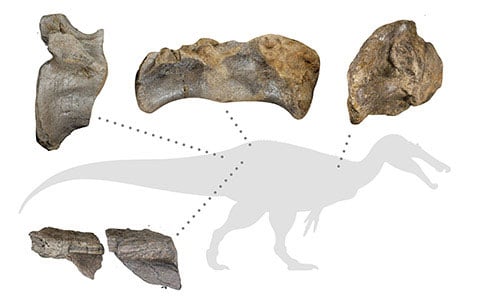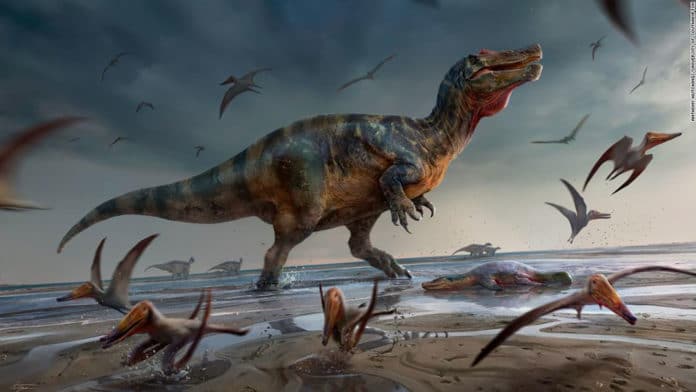Paleontologists at the University of Southampton have found the remains of a spinosaurid on the south coast of England and housed at Dinosaur Isle Museum in Sandown. The dinosaur measured over 10m long. It was one of Europe’s largest land-based hunters that lived almost 125 million years ago.
Paleontologists discovered several prehistoric bones. Analysis suggests that the bones belonged to a type of two-legged, crocodile-faced predatory dinosaur known as spinosaurids.
Because of the geological layers, it was discovered in, scientists dubbed it as ‘White Rock spinosaurid’ – it was a predator of impressive proportions.
Ph.D. student Chris Barker, who led the study, said, “This was a huge animal, exceeding 10 m in length and probably several tonnes in weight. Judging from some dimensions, it appears to represent one of the largest predatory dinosaurs ever found in Europe – maybe even the biggest yet known. It’s a shame it’s only known from a small amount of material, but these are enough to show it was an immense creature.”
The discovery follows prior research on spinosaurids by a team from the University of Southampton, which published a publication in 2021 detailing the discovery of two new species.
The ‘White Rock spinosaurid’ bones were discovered in Compton Chine, on the Isle of Wight’s southwest coast, and comprise massive pelvis and tail vertebrae, among other fragments. The Cretaceous rocks are famed for their dinosaurs. Still, it’s less well recognized that the Island’s fossil record preserves dinosaurs from different periods of history, some of which are still poorly understood today.

Corresponding author Dr. Neil Gostling, who teaches evolution and palaeobiology at the University of Southampton, said, “Unusually, this specimen eroded out of the Vectis Formation, which is notoriously poor in dinosaur fossils. It’s likely the youngest spinosaur material yet known from the UK.”
Co-author Darren Naish said, “The 125 million-year-old Vectis Formation preserves the beginning of a period of rising sea levels, where the ‘White Rock spinosaurid’ stalked lagoonal waters and sandflats in search of food. Because it’s only known from fragments at the moment, we haven’t given it a formal scientific name. We hope that additional remains will turn up in time.”
“This new animal bolsters our previous argument – published last year – that spinosaurid dinosaurs originated and diversified in western Europe before becoming more widespread.”
Jeremy Lockwood, a Ph.D. student at the University of Portsmouth and Natural History Museum, said, “Marks on the bone also showed how, even after death, the body of this giant probably supported a range of scavengers and decomposers. Most of these amazing fossils were found by Nick Chase, one of Britain’s most skilled dinosaur hunters, who sadly died just before the Covid epidemic.”
“I was searching for remains of this dinosaur with Nick and found a lump of the pelvis with tunnels bored into it, each about the size of my index finger. We think bone-eating larvae of a scavenging beetle caused them. It’s an interesting thought that this giant killer wound up becoming a meal for a host of insects.”
In the near future, scientists intend to produce thin sections of the material to examine the tiny internal features of the bones, which could reveal information on their growth rate and age.
Journal Reference:
- Barker CT, Lockwood JAF, Naish D, Brown S, Hart A, Tulloch E, Gostling NJ. 2022. A European giant: a large spinosaurid (Dinosauria: Theropoda) from the Vectis Formation (Wealden Group, Early Cretaceous), UK. PeerJ 10:e13543 DOI: 10.7717/peerj.13543
